| |
|
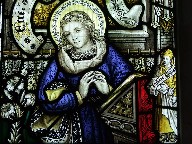 |
|
This little hilltop church
is one of the most familiar of sights to
Suffolk travellers, rising like a small
castle to the north of the A14. At one
time there was another church, All
Saints, in the same churchyard, which
would have looked even more dramatic if
dual carriageways had existed in those
days. But the old church came down after
a storm in 1800, and they built a north
transept onto St Mary to accomodate the
parishioners. When St Mary underwent a
large scale and extravagant restoration
in the late 19th Century, an aisle was
added to the north side, and no trace of
the transept remains. For
many years, St Mary was difficult of
access to passing strangers, but there is
now a notice listing keyholders, and I
must tell you that I found them very
welcoming and friendly.
|
The
tower close-up is a fine sight, its bellstage and
battlements crisp from their 1885 rebuilding. The
chancel was also rebuilt at this time, and you
step into what is almost completely a late 19th
Century space. The 15th Century font has been
moved into the space beneath the tower, as if not
to distract from all things late Victorian. But
the overwhelming impression is of what is one of
the best collections of Kempe & Co glass in
all East Anglia. There are figures of Saints, Old
Testament Prophets and Patriarchs, and in the
north aisle an excellent Annunciation and figures
of St George and St Alban which show that the
company could still hold its head up in the early
decades of the 20th Century.
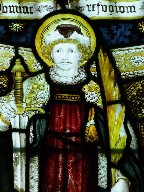
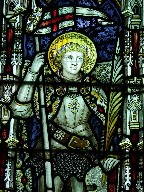
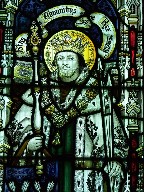 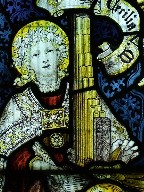
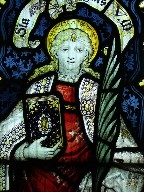
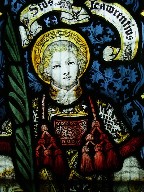 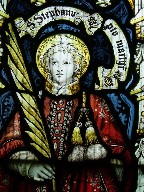
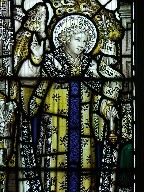 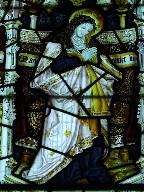 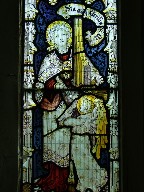
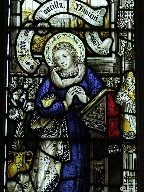 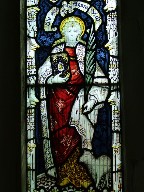 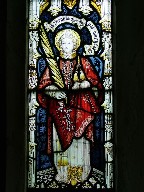
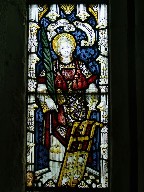
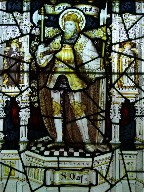 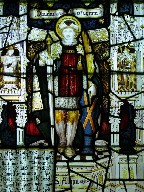
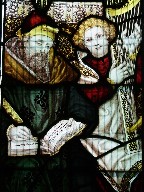 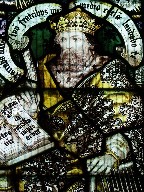 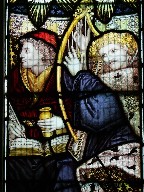 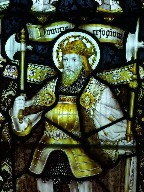
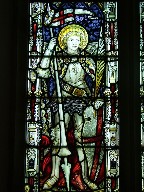
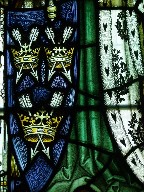 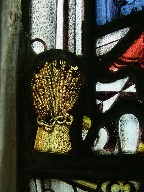  
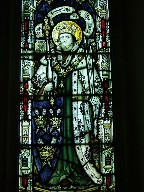
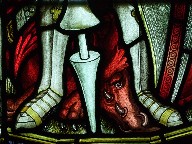
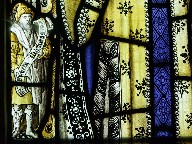 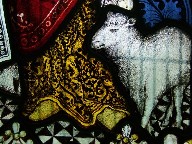 
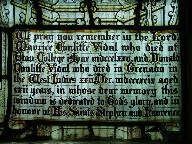 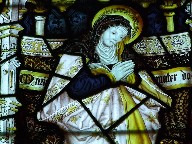 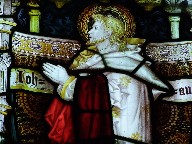 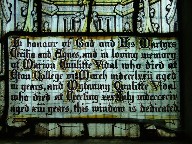
 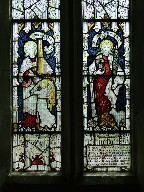 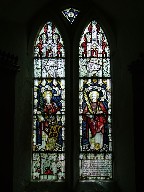 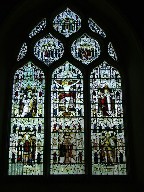
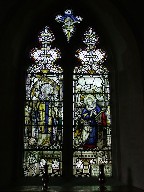 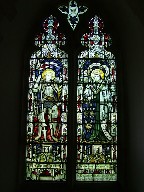
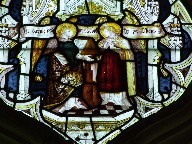 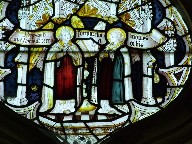 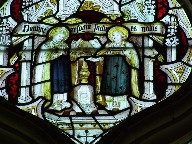 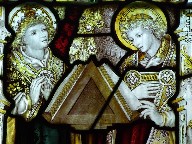
The
westernmost window in the north aisle strikes the
only dissonant note in this sea of Kempe, and a
fine dissonance it is. It an important work by
Brian Thomas, depicting the Adoration of the
Shepherds. It dates from 1950, an early date for
such modernist figurativeness, still looking back
to the expressionism of stained glass artists
like Leonard Walker, with one eye forward to the
Festival of Britain joy and simplicity of the
likes of Harry Stammers and Moira Forsythe. The
subject is always a powerful one in rural
backwaters like Creeting St Mary. At about the
same time as Thomas was making this work, he
received one of the great stained glass
commissions of the second half of the 20th
Century, to create a vast scheme of windows for
the bombed out church of St Nicholas in Great
Yarmouth, the largest parish church in England.
To see his work here on such an intimate and
human scale is a rare privilege.
 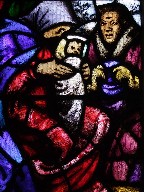 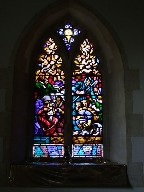 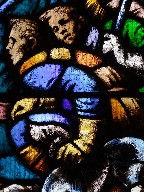 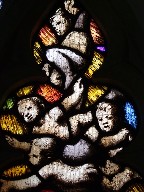
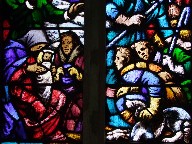 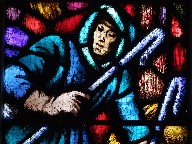 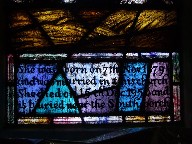
Stepping
back outside, the best feature of the exterior is
the excellent 15th Century porch, one of several
in this part of central Suffolk. A surprise in it
is the Norman doorway, which is perhaps the only
survival of the earliest church on this site. A
plaque inside the porch records that the modern
figure of the Blessed Virgin was given in memory
of Canon Harry Fleetwood, who for 45 years
never failed to teach the Faith in this church.
Fleetwood's infant son, Christopher, is buried
beneath a cross to the south of the church.
| The war memorial outside the
porch faces prominently out across the
valley of the infant River Gipping, but
back inside the church are brass
reminders of lives lost in the Great War.
One is to two brothers of Harry
Fleetwood's wife, William James and
Douglas James. Both in their early
twenties, they were killed in the hell of
the Battle of Loos in September 1915,
just five days apart. The Battle of Loos,
it will be remembered, was the occasion
on which gas was first used, by both
sides. Another brass
plaque remembers George Groom, an
appropriately-named sergeant in the Royal
Horse Artillery. He was killed in the
even more infamous Battle of the Somme in
July 1916, and is buried at Heilly
Cemetery near Mericourt l'Abbé to the
east of Albert on the Somme battlefield.
|
|
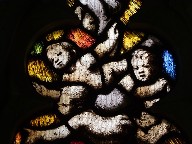 |
|
|
|

